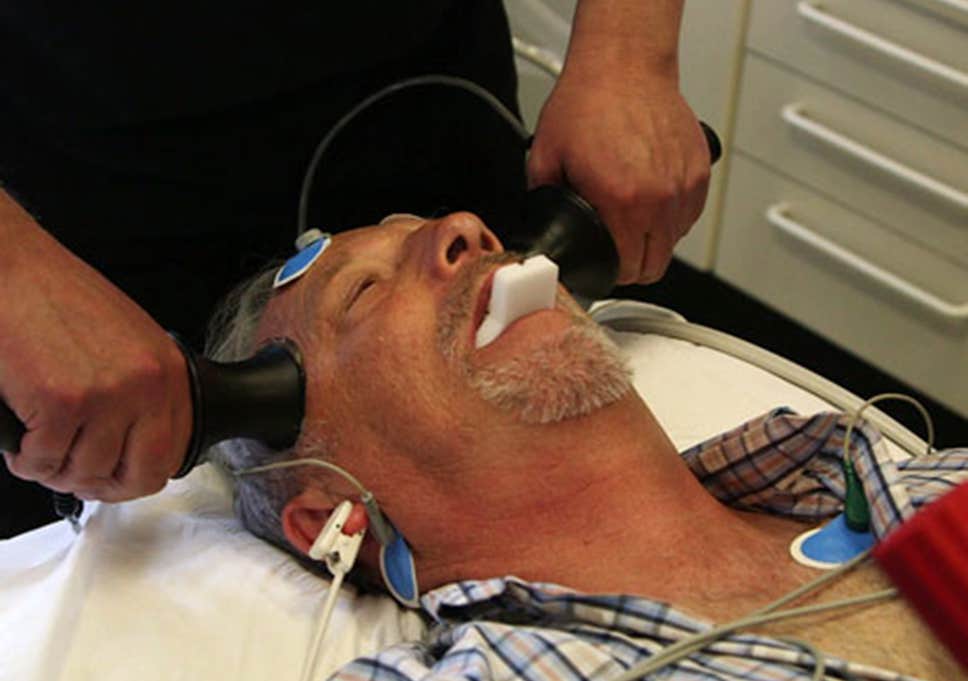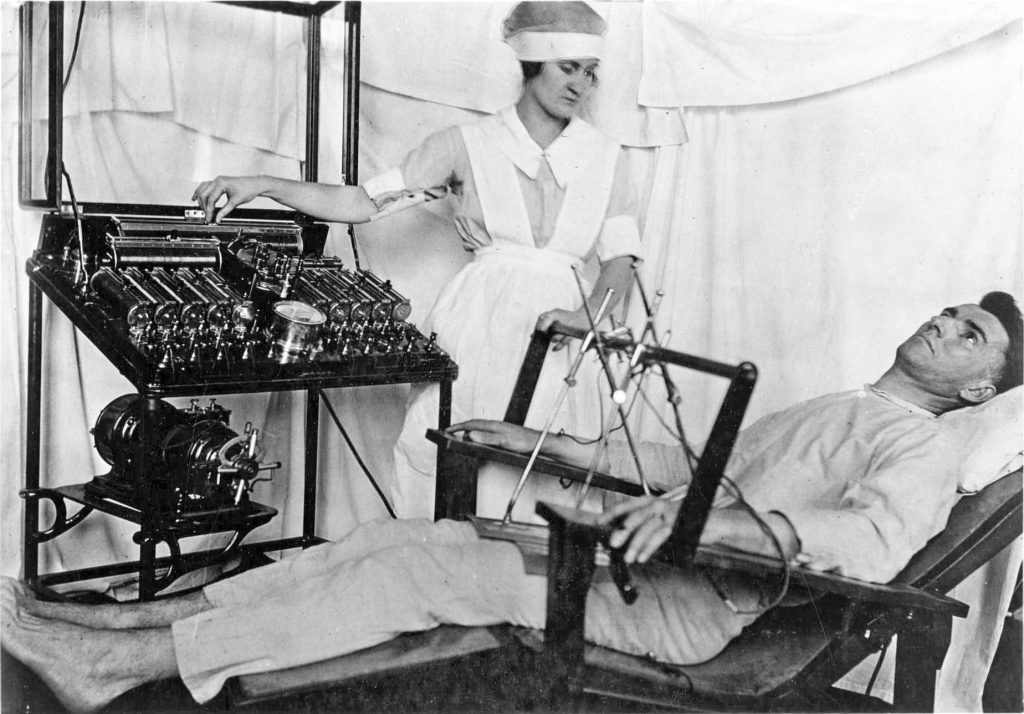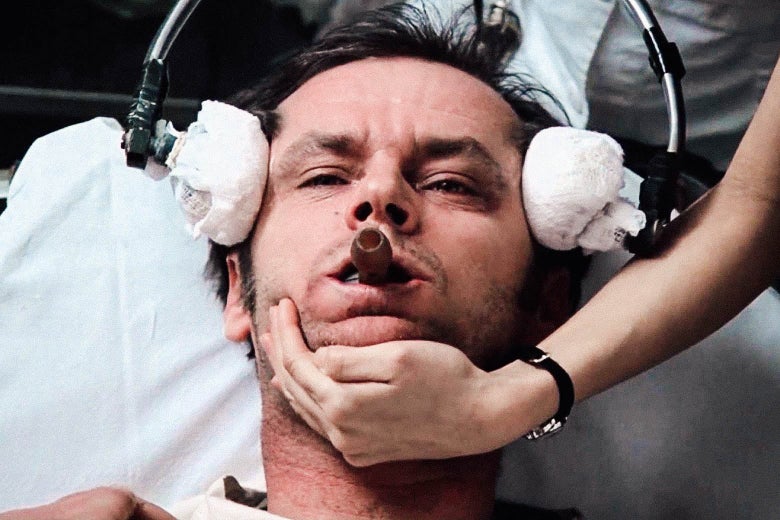
Let’s face it, the practice of medicine has some dark chapters, and to many, electro-shock therapy of the 60’s makes up one of the darkest. The images of patience strapped down and basicly tortured is something that’s seared into the American conscience to the point that it’s practically an archetype. You have about a 50-50 chance of seeing some kind of shock treatment scene in any haunted house you happen to visit.
So let me tell you something you probably don’t know.
It’s still done. It’s still done because it works.
There are mountains of evidence that prove it works. Not just that it works, but what methods work best, all the way down to determining the peak level of effectiveness. The only thing we don’t know, is why it works.
I know a doc who has often provided anesthesia for patients being so treated. The whole thing is just bizarre to me.
First of all, the whole thing is very hush hush. The centers are usually very easy to get in and out of. Patients frequently have a private door, so folks don’t see them coming and going. The stigma is palpable.
The major difference between modern shock therapy and what was endured 50 years ago is anesthesia. Now patients sleep through it, and not just that, they mostly lay still because they are paralyzed.
See the whole point is to flood the brain with electricity and induce a seizure. There are pretty strict guidelines about the length of the siezure, which affects the efficiency of treatment. On the other hand, the seizures can be so violent that the patient could be injured, so these days, anesthesiologists actually use very short-acting paralytics.
Of course, if the patient is paralyzed, it’s kinda hard to tell how long the siezure is lasting, ain’t it?
So how did they solve this?

Well, to be honest, some anesthesiologist was looking around and saw a bloodpressure cuff laying around. He inflated it on one of the patient’s arms then gave the paralytic. The cuff prevented the drug from flowing into the cuffed arm, so they could watch the one arm flop around, and therefore safely time the seizure.
Seriously.
Of course this all leads to some jolly great fun once one considers the possibilities. For example, unsuspecting nursing students, or rookie interns are almost always told to stand next to the cuffed arm, with predictable results.
My doctor friend still cracks up when remembering this one chick that nearly had to be resuscitated after the arm jumped up at her.
Yes Virginia… hazing still exists. It’s just more elaborate.









